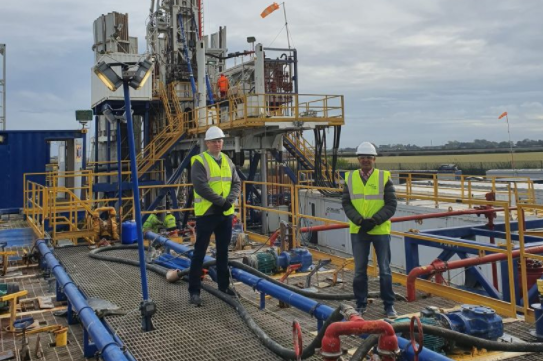
A minor shareholder in North Sea firm Reabold Resources (LON: RBD) is trying to oust the company’s entire board of directors.
Pershing Nominees, which owns about 6.93% of London-listed Reabold’s issued share capital, has written a letter calling for a general meeting.
It wants to remove the firm’s entire board and replace them with four new directors of their own choosing.
Reabold has accused Pershing of trying to “opportunistically gain” control of the company, its cash and assets without paying a “control premium”.
It also says the directors that have been forward as replacements have a “track record of exceptional value destruction” in oil and gas companies, and has urged its shareholders to “take no action at this stage”.
Subsequent discussions have taken place with lawyers, and Reabold has found “several deficiencies” in the request, tabled under 303 of the companies act.
It has advised Pershing of the actions it needs to take if a general meeting is to be held.
In a statement, Reabold said: “Whilst the Company does not wish to deny any member the right to convene a general meeting under the act, this has to be balanced against due and proper process and the prudent use of shareholder resources.
“Having taken legal advice, the board has ascertained that the documentation as received contains several deficiencies and is therefore not a valid requisition notice under section 303 of the Act.
“The company has written to Pershing as to the actions it needs to take to validly call a general meeting and has invited Pershing to procure that a valid request under section 303 is submitted.
“If and when the Company receives a valid requisition notice from Pershing, the Board will respond to it in accordance with the Act and will share its views on the proposals with shareholders.”
Further announcements will be made as appropriate, the company added.
Reabold recently completed a £32 million deal with oil giant Shell for the former’s controlling stake in West of Shetland operator Corallian Energy.
The move netted Reabold £12.7m, aiding its “financial felxibility”.
As part of the deal, Reabold acquired all of Corallian’s working interests in its portfolio, apart from the Victory licences, estimated to hold mid-case recoverable resources of 179 billion cubic feet of gas (bcf).
It intends to use the net proceeds from the sale to advance the development of its existing assets, including onshore hydrocarbon discover West Newton, and assess potential further acquisition opportunities.
Summary of Reabold’s key North Sea Licences:
P2605 (100%)
The licence is located West of Shetland, northwest of the Victory licence (P2596) and contains the Laxford gas discovery, made in 1984 by British Gas well 214/30-1, which flowed 17.5 mmscfg / day from the Palaeocene Vaila Sandstone.
The licence also contains the Scourie prospect, a Palaeocene Vaila Sandstone target exhibiting a seismic amplitude anomaly similar to that seen at the nearby Glenlivet gas field.
The P50 prospective recoverable resource of Laxford is 68* bcfe, and for Scourie is 90* bcfe.
P2478 (36%)
The licence is located in the Inner Moray Firth and contains the Dunrobin Prospect. The primary reservoir intervals are sandstones of the Beatrice Formation and Dunrobin Bay Group and the reservoir quality of these formations in nearby wells is good to excellent. A potential secondary reservoir is provided by Triassic Lossiehead Formation sandstone.
The estimated P50 prospective recoverable resource is 115* mmboe gross.
It is worth noting that the Dunrobin Prospect is located in shallow water, with shallow target depths and consequently drilling costs are expected to be relatively low.
P2464 (100%)
The licence is located in the East Shetland Basin and contains the Unst gas prospect, an Eocene Frigg sandstone prospect which exhibits a seismic amplitude anomaly similar to that observed at the nearby Nuggets Fields.
The estimated P50 prospective recoverable resource volume is 68* bcfe, located within 30km of gas infrastructure.
The licence also contains the Quoys prospect, a Jurassic structural / stratigraphic trap up dip of the 3/19b-2 oil discovery.
P2504 (100%)
The licence is adjacent to licence P2464 in the East Shetland Basin and contains the Oulton oil discovery, drilled by Amoco in 1974 in the 3/11-1 and side-track 3/11-1ST wells. Light oil was tested from the Jurassic Emerald sandstones contained within a fault block trap as imaged on 3D seismic data.
The discovery is estimated to contain 10-19 million barrels of oil recoverable (1C to 3C Contingent Resources), based upon a Schlumberger CPR completed in 2018.
The block also contains the Oulton West prospect, a stratigraphic trap at the Emerald level, which is up-dip and potentially connected to the Oulton discovery via a structural saddle mapped in the south-eastern limit of the prospect.
In addition, the Oulton West prospect is overlain by an Eocene-aged Frigg sandstone gas prospect exhibiting a direct hydrocarbon indicator (DHI) in the form of an amplitude anomaly which conforms to structure at the mapped top reservoir horizon.
Correction – 9am, 19th October: A previous version of this article stated Pershing Nominees was a subsidiary of The Bank of New York (BNY) Mellon Corporation. This was incorrect and it has been amended – we apologise for the confusion.
Recommended for you

